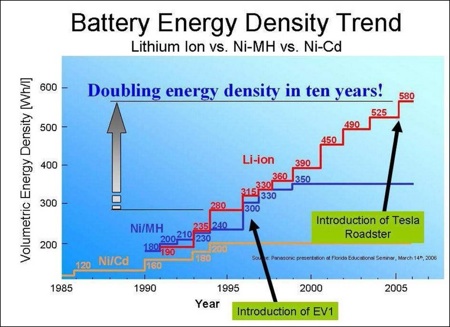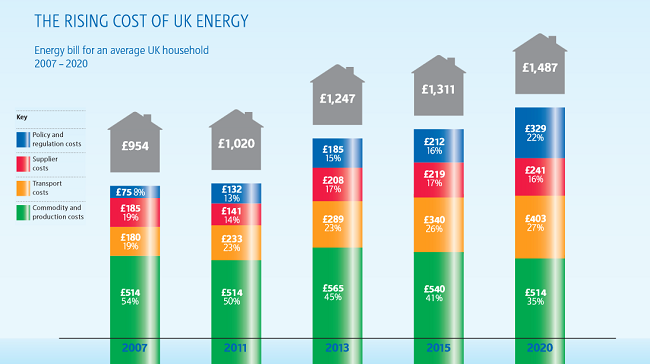This is a decent article attempting to find ways to counter anti-nuclear hysteria. Including this on the LNT theory proving even governments promoting it don't believe in it except when they want:
"If one assumes a linear relationship between dose and cancer risk, it follows that total health impacts (cancers, deaths) scale directly with collective exposure, i.e., the integral of dose times the number of people exposed (in units of man-Rem). If government policy is ostensibly based on LNT today, you would think that said policy would treat all man-Rems the same. In a clear sign that policies and standards are not objective or science based, that is not true, by many orders of magnitude.
The fact of the matter is that, while LNT, along with a 10‑4 to 10-6 lifetime cancer risk criterion, will be applied to cleanup standards after any nuclear plant release, vastly larger sources of public collective exposure are simply ignored. These include all exposures from natural background (e.g., radon), air travel, and medical exposures to some extent. Exposures to naturally occurring radioactive materials from all other industries (such as coal plant emissions or old oil pipes off the California coast) are also generally ignored.
Radon is estimated to expose on the order of 100 million Americans to hundreds of millirem annually, resulting in an annual collective exposure on the order of 25 million man-Rem. According to the LNT, this results in on the order of ~10,000 annual deaths. Medical exposures are also a huge source of collective exposure (with CAT scans alone causing ~29,000 annual deaths, according to LNT), and the medical community is only starting to pay attention to the issue, with patients and many practitioners hardly thinking about it at all. Both of these sources of collective exposure are orders of magnitude larger than the collective exposure that would result from a worst-case nuclear accident, even if no cleanup efforts were made.
And yet, nothing is being done about them. Little to no money is being spent. People aren’t even being warned (not saying they should be). In all those areas (radon, medical), collective exposures could be reduced at a cost (in dollars per man-Rem avoided) that is many orders of magnitude lower than the amount we’re planning on spending cleaning up affected areas after a nuclear plant accident. If we really believed in the LNT, and really (and objectively) cared about reducing collective exposure, we would focus on those areas instead.
The LNT is not the problem. Its selective application is the problem."
I commented:
I agree about LNT, indeed I suspect the opposite theory, hormesis, that low level radiation is beneficial is correct. I have done a collation of links of evidence against LNT
http://a-place-to-stand.blogspot.co.uk/2010/03/low-level-radiation-evidence-that-it-is.html I did intend to also include scientific evidence for it but there is literally none.
I have suggested a legal right (possibly constitutional amendment) to allow any regulation to be challenged in court on the grounds that it requires actions at least 4 times more onerous per life saved than other regs in comparable industries. This cost benefit analysis would certainly allow nuclear industries to overthrow most of its regulatory burden and it would be difficult for politicos to explain why they were against it.
But what we really need is a rottweiller charity willing to go all out at anti-nuclear campaign. To sue anybody good cases of lies about the industry. To advertise that newspapers that give coverage to false scare stories and don’t give at least as much coverage to the truth (ie almost all of them) are, by definition, corrupt, lying, fascist scum who cannot be trusted to tell the truth on anything else.
And that governments that give money to promote “environmental” issues, they approve of, are engaged in totalitarian fraud if they don’t give an equal amount to technology promoters – just as much as a Democrat (or Republican) Governor who gave money to his own party would be criminally liable.
All of which unfortunately needs a bit of money to start it rolling.
=============
Meanwhile
Colin McInnes has an article in the Herald
Nuclear power is largest generator of electrical energy in Scotland
Colin McInnes
While the focus of the UK nuclear sector is on the new-build programme,
recent results from EDF remind us that existing nuclear capacity is still a
major player in the UK energy scene.
Their nuclear fleet is now delivering more electrical energy than at any
time during the past eight years, resulting in a boost for operating
profits. And with a 10-year life-extension for Dungeness B due to be
finalised later this year, nuclear investments from the 1970s and 80s will
still be paying dividends for many years to come.
Nowhere is the contribution of the UK nuclear fleet more apparent than in
Scotland, with two reactors at Hunterson and Torness. Though a little-known
fact, through these two compact plants, nuclear is the largest generator of
electrical energy in Scotland by some margin, as it has been for many
years. Indeed, the output from the single nuclear plant at Torness alone (9
TWh) comfortably exceeds the combined output of every wind, wave and solar
generator in Scotland (8.3 TWh). This clearly illustrates the benefit of
energy-dense fuels used in compact and efficient thermal plants, which can
provide continuous output over a plant life of many decades.
While Scotland is pitched as the Saudi Arabia of renewable energy, it's
steadfastly nuclear-powered.
In contrast, the arbitrary government target of generating the equivalent
of 100% of Scotland's electrical energy consumption from diffuse and
intermittent renewable resources by 2020 is perplexing. While climate
change targets are mooted as one of the primary motivations, Scotland's
electrical energy generation is in fact already 100% low carbon, as
measured against the government's own metric.
In 2012, Scottish electrical energy consumption was 30.8 TWh, while
production from our two compact nuclear plants was 17.0 TWh, all wind, wave
and solar production was 8.3 TWh, hydro 4.8 TWh and other renewables 1.6 TWh.
Output from low carbon sources therefore exceeded domestic consumption, a
fact that is rarely noted, or indeed celebrated by government and
environmental NGOs. To do so would be to acknowledge the reality of the
immense contribution of nuclear energy to Scotland's electrical energy
production, and indeed its exports to the rest of the UK.
Colin McInnes is Professor of Engineering Science at the University of
Strathclyde
=================================
And The Register points out what Fukushima proves:
Analysis
It's worth noting here that the Daiichi reactors and cooling pools were not
particularly safe as nuclear powerplants go: they were a very old, long outmoded
design. They were hit by earthquakes and tsunamis wildly beyond what they were
rated to withstand, in the second worst nuclear power disaster that has ever
happened anywhere.
And as a result ... absolutely nobody's health has been or will be measurably
harmed. That's a pretty impressive safety performance.
We stand by our
original headline: Fukushima was a triumph for nuclear power,
not a disaster. If there's one lesson to learn from it, it's that nuclear power
is very safe indeed. ®





